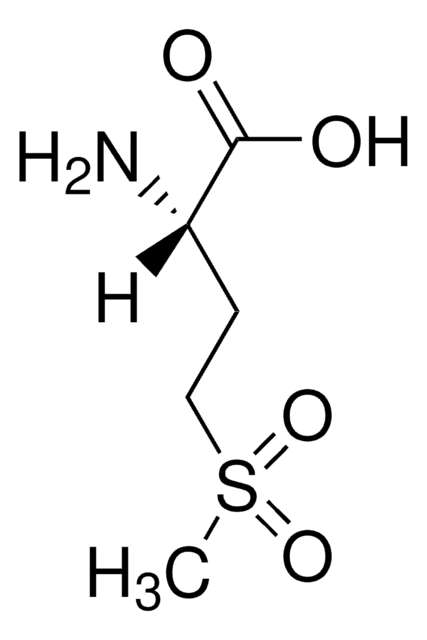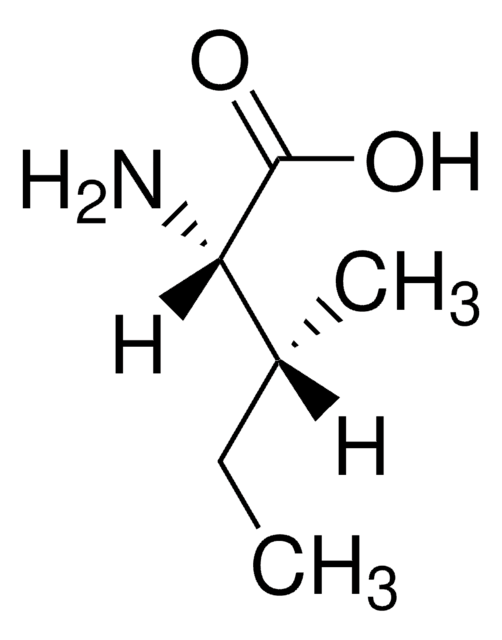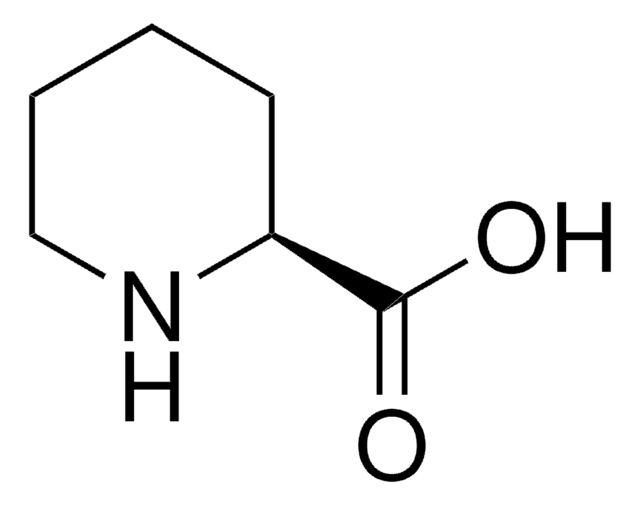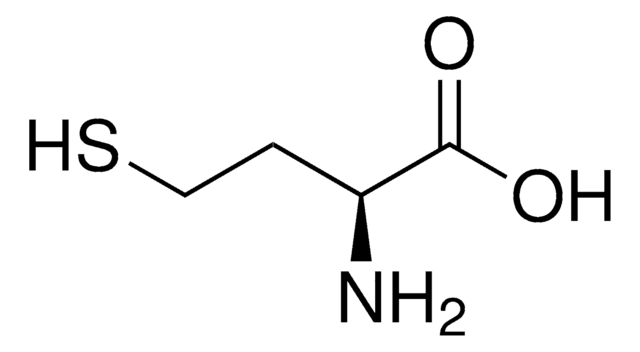95148
L-Argininosuccinic acid lithium salt
analytical standard
Synonyme(s) :
N-{{[(4S)-4-Amino-4-carboxybutyl]amino}iminomethyl}-L-aspartic acid lithium salt, Lithium L-argininosuccinate
About This Item
Produits recommandés
Qualité
analytical standard
Pureté
≥90.0% (HPLC)
Forme
solid
Activité optique
[α]/D 15±2°, c = 1 in H2O
Durée de conservation
limited shelf life, expiry date on the label
Impuretés
≤20% water
Application(s)
clinical testing
Température de stockage
2-8°C
Chaîne SMILES
OC(C[C@@H](C(O)=O)NC(NCCC[C@H](N)C(O)=O)=N)=O.[Li+]
InChI
1S/C10H18N4O6.Li/c11-5(8(17)18)2-1-3-13-10(12)14-6(9(19)20)4-7(15)16;/h5-6H,1-4,11H2,(H,15,16)(H,17,18)(H,19,20)(H3,12,13,14);/q;+1/t5-,6-;/m0./s1
Clé InChI
MGJRREWOOITZBB-GEMLJDPKSA-N
Vous recherchez des produits similaires ? Visite Guide de comparaison des produits
Catégories apparentées
Actions biochimiques/physiologiques
Code de la classe de stockage
11 - Combustible Solids
Classe de danger pour l'eau (WGK)
WGK 3
Faites votre choix parmi les versions les plus récentes :
Certificats d'analyse (COA)
Vous ne trouvez pas la bonne version ?
Si vous avez besoin d'une version particulière, vous pouvez rechercher un certificat spécifique par le numéro de lot.
Déjà en possession de ce produit ?
Retrouvez la documentation relative aux produits que vous avez récemment achetés dans la Bibliothèque de documents.
Notre équipe de scientifiques dispose d'une expérience dans tous les secteurs de la recherche, notamment en sciences de la vie, science des matériaux, synthèse chimique, chromatographie, analyse et dans de nombreux autres domaines..
Contacter notre Service technique







